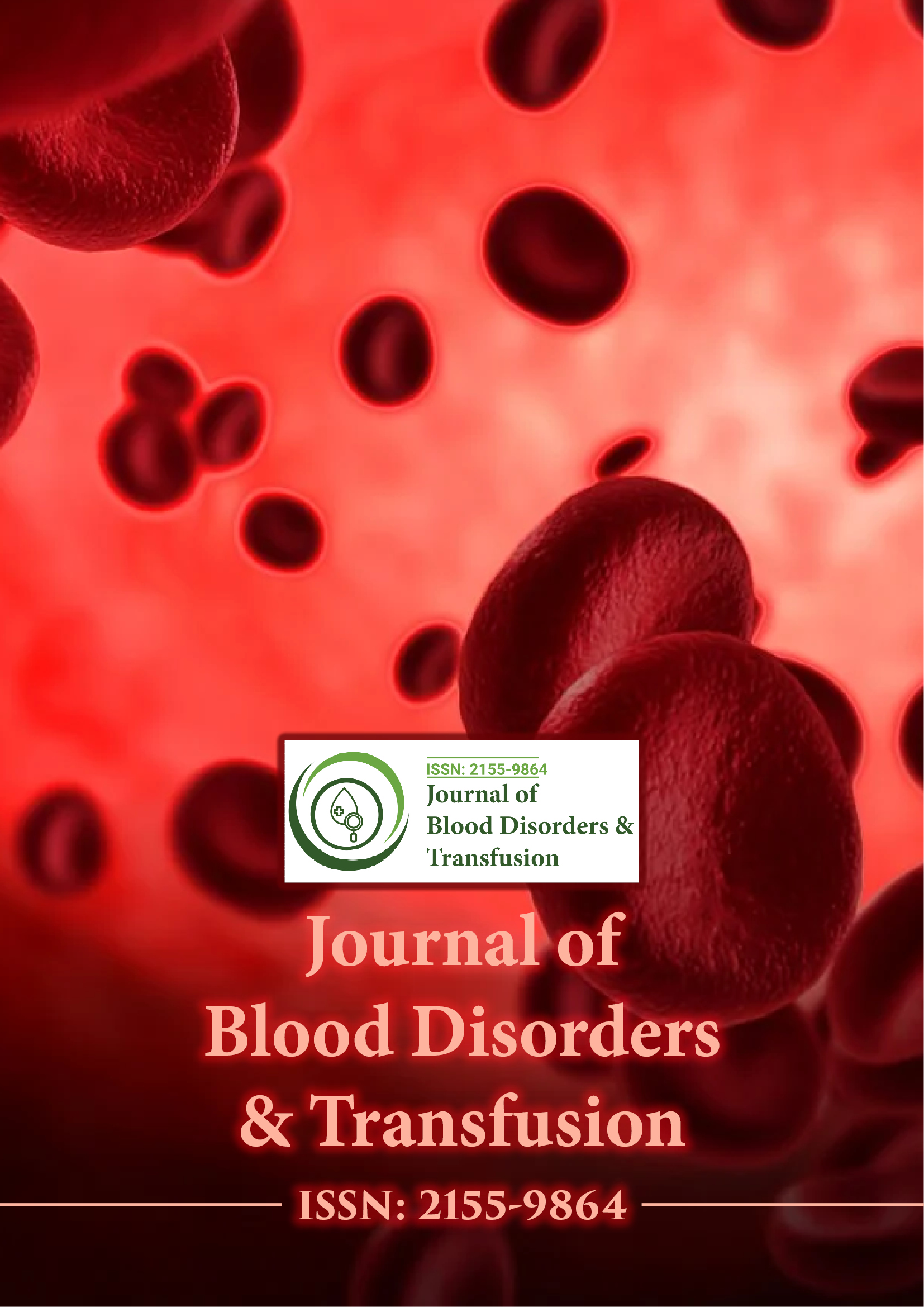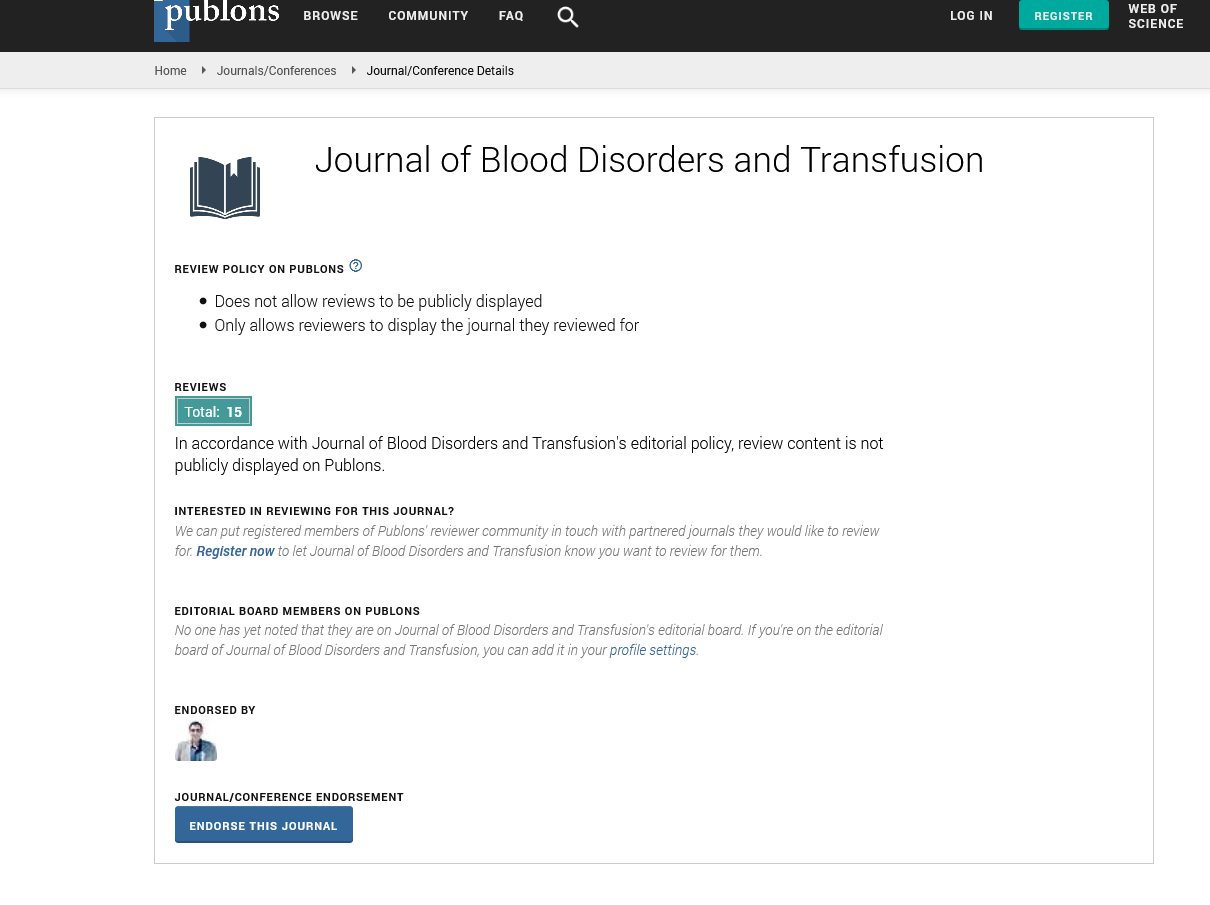Indexed In
- Open J Gate
- Genamics JournalSeek
- JournalTOCs
- Ulrich's Periodicals Directory
- RefSeek
- Hamdard University
- EBSCO A-Z
- OCLC- WorldCat
- Proquest Summons
- Publons
- Geneva Foundation for Medical Education and Research
- Euro Pub
- Google Scholar
Useful Links
Share This Page
Journal Flyer

Open Access Journals
- Agri and Aquaculture
- Biochemistry
- Bioinformatics & Systems Biology
- Business & Management
- Chemistry
- Clinical Sciences
- Engineering
- Food & Nutrition
- General Science
- Genetics & Molecular Biology
- Immunology & Microbiology
- Medical Sciences
- Neuroscience & Psychology
- Nursing & Health Care
- Pharmaceutical Sciences
Commentary - (2025) Volume 0, Issue 0
Improving Diagnosis of Inherited Platelet Function Disorders
Dino Zieger*Received: 28-Mar-2025, Manuscript No. JBDT-25-28993 ; Editor assigned: 01-Apr-2025, Pre QC No. JBDT-25-28993 (PQ); Reviewed: 15-Apr-2025, QC No. JBDT-25-28993 ; Revised: 22-Apr-2025, Manuscript No. JBDT-25-28993 (R); Published: 29-Apr-2025, DOI: 10.4172/2155-9864.25.S13.063
Description
Heritable platelet disorders encompass a group of rare genetic conditions affecting platelet function, structure, or number, leading to abnormal bleeding tendencies. These disorders often present diagnostic challenges due to their clinical overlap with acquired platelet abnormalities and coagulation defects. Accurate diagnosis is essential for effective patient management, risk assessment and genetic counseling. Recent developments in diagnostic techniques have enhanced the ability to detect and characterize these disorders with improved precision.
Heritable platelet disorders
Platelets play a key role in hemostasis by adhering to damaged blood vessels, activating, aggregating and forming a hemostatic plug. Genetic abnormalities that interfere with these processes cause a spectrum of platelet disorders, which can be broadly classified as quantitative or qualitative defects. Quantitative defects involve altered platelet counts, such as thrombocytopenia, while qualitative defects affect platelet function despite normal counts.
Clinical presentation and initial assessment
Patients with inherited platelet disorders typically exhibit mucocutaneous bleeding, including easy bruising, nosebleeds, gum bleeding and prolonged bleeding after surgery or trauma. Menorrhagia is common in affected females. Family history and bleeding assessment tools help raise suspicion.
Initial evaluation includes complete blood count and peripheral smear to assess platelet number and morphology. Basic coagulation studies such as prothrombin time and activated partial thromboplastin time assist in excluding coagulation factor deficiencies.
Conventional laboratory techniques
Platelet Function Analyzer (PFA): The Platelet Function Analyzer (PFA-100 or PFA-200) offers a rapid screen of platelet adhesion and aggregation under high shear flow using cartridges coated with collagen and either epinephrine or ADP. Prolonged closure times suggest platelet dysfunction or von Willebrand factor abnormalities. While this test is sensitive to a range of disorders, it cannot specify the defect’s nature.
Light Transmission Aggregometry (LTA): Light Transmission Aggregometry has long been the standard for assessing platelet aggregation. Platelet-rich plasma is stimulated with various agonists (ADP, collagen, epinephrine, arachidonic acid, ristocetin) and changes in light transmission are recorded. Distinct response patterns help distinguish disorders; for example, absent aggregation to all agonists except ristocetin indicates Glanzmann thrombasthenia, while a selective defect with ristocetin suggests Bernard-Soulier syndrome.
Flow cytometry: Flow cytometry allows quantitative analysis of platelet surface glycoproteins and activation markers. Antibodies targeting specific receptors enable identification of receptor deficiencies characteristic of several hereditary disorders. Additionally, activation markers like P-selectin help evaluate platelet responsiveness.
Electron microscopy: Transmission electron microscopy provides ultrastructural details of platelet granules, aiding in diagnosing storage pool deficiencies or gray platelet syndrome by visualizing granule presence or absence. Its limited availability and labor-intensive nature restrict routine use.
Molecular and genetic advances
The application of molecular genetics has transformed the diagnosis of heritable platelet disorders. Next-Generation Sequencing (NGS) technologies, including targeted gene panels, Whole Exome Sequencing (WES) and Whole Genome Sequencing (WGS), allow identification of mutations in genes encoding platelet receptors, signaling proteins and granule constituents.
These techniques enable definitive diagnosis, especially in atypical presentations or cases with inconclusive functional studies. Genetic testing also supports family studies and prenatal diagnosis.
Integrated diagnostic approach
Given the heterogeneity of heritable platelet disorders, no single test provides a comprehensive diagnosis. Combining clinical evaluation, conventional laboratory testing, and genetic analysis enhances diagnostic accuracy. Multidisciplinary teams including hematologists, laboratory scientists and geneticists are essential for interpreting complex data and advising on patient management. Continuous updates in testing methodologies and clinical guidelines support this integrated approach.
Future perspectives
The future of diagnosing inherited platelet disorders lies in refining molecular diagnostics, expanding accessibility to genetic testing and validating emerging technologies in clinical practice. Greater understanding of platelet biology through systems biology approaches may reveal novel biomarkers and therapeutic targets. Efforts toward global standardization of laboratory methods and collaborative networks will improve diagnostic consistency and patient care worldwide.
Advances in the diagnosis of heritable platelet disorders have significantly enhanced the identification and characterization of these rare conditions. Developments in laboratory techniques, molecular genetics and emerging technologies have expanded diagnostic capabilities. Despite existing challenges, an integrated approach combining clinical, laboratory and genetic data provides the most reliable means of diagnosis. Continued research and standardization efforts will support better detection and management of inherited platelet dysfunctions, ultimately improving patient outcomes.
Citation: Zieger D (2025). Improving Diagnosis of Inherited Platelet Function Disorders. J Blood Disord Transfus. S13:063.
Copyright: © 2025 Zieger D. This is an open-access article distributed under the terms of the Creative Commons Attribution License, which permits unrestricted use, distribution, and reproduction in any medium, provided the original author and source are credited.

